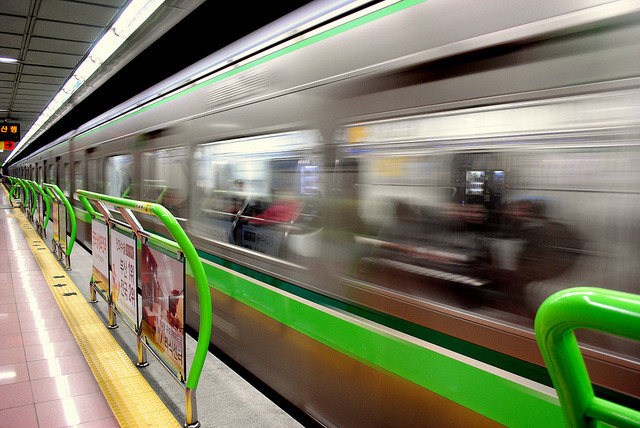
Putting up with jam-packed buses or subway trains on your way to work every morning may help you stay fit.(image:raruschel/Flickr)
SEOUL, Korea, April 6 (Korea Bizwire) – Just like an old Korean saying, constant drops of water can indeed make a hole in the stone. In this case, putting up with jam-packed buses or subway trains on your way to work every morning may help you stay fit. A recent study has shown that taking mass transit to work burns twice more calories than driving to work.
On March 4, in a study funded by the Smart Transportation Welfare Foundation established by Korea Smart Card, the provider of Korea’s most widely used public transit pass and payment system, “T-Money,” Kyunghee University Hospital Sports Medicine professor Lee Man-gyun reported that when a person traveled for 60 minutes in one’s own car, about 108 kcal was burned in the process.
When traveled the same distance using public transportation, a little walk is added to the itinerary to end up burning 211 kcal in total. One can easily extend the work-out routine by taking stairs instead of an escalator when transferring to another train.
If one commutes using mass transportation for five days in a week, 4,120 kcal more energy is burned each month, adding up to 49,440 kcal more consumed each year. Such an amount is equivalent to about a 6.42-kg (14.15-pound) weight loss considering that 1 kg of fat can be lost for every 7,700 kcal.
The research team led by Prof. Lee has come up with such numbers by measuring the calorie consumed with the “portable gas analyzer” attached to the test subject who traveled from Suwon to Gangnam district in Seoul. During the 60-minute trip, the subject took a seat for a half of the time and stood for the other half. The walks in between stations and buildings were assumed to have lasted for 10 minutes each.
Prof. Lee said that using public transportation can overcome or prevent obesity. He said, “There have also been studies performed outside Korea, in which the hypertensive population in a city where means of public transportation were preferred over private cars turned out to be lower than in another city with the exact opposite preferences in the mode of transportation.”
Written by Robin Koo (linguistkoo@koreabizwire.com)
Lifestyle (Follow us @Lifestylenews_Korea)






